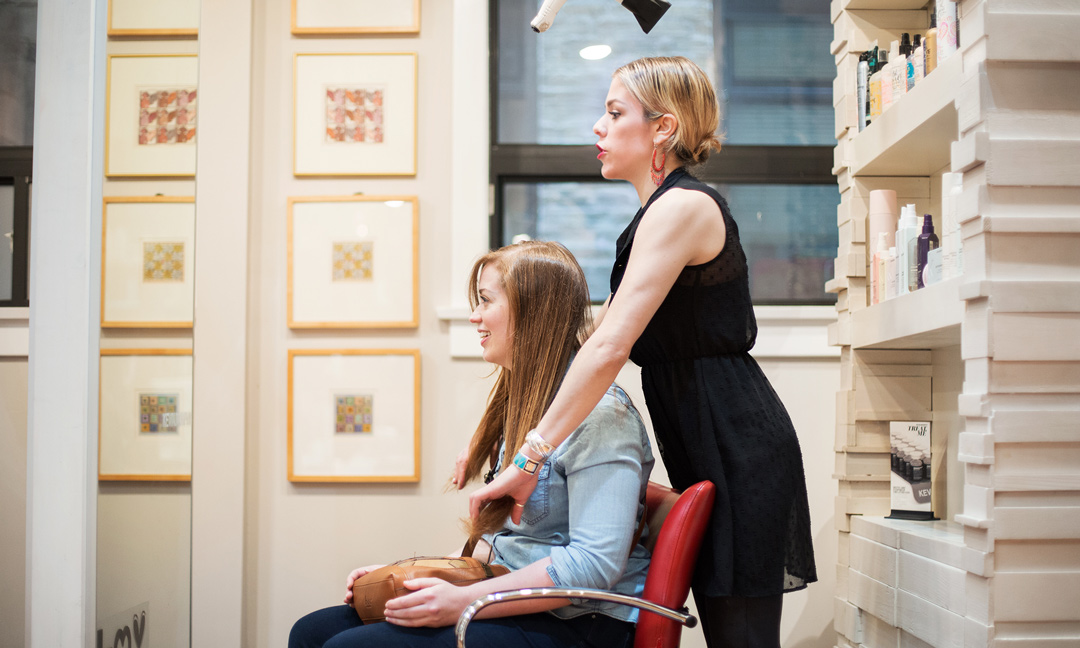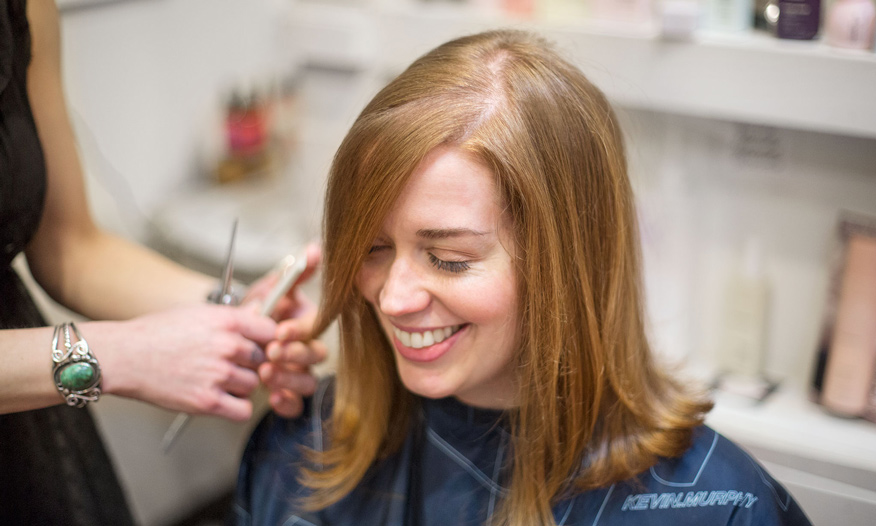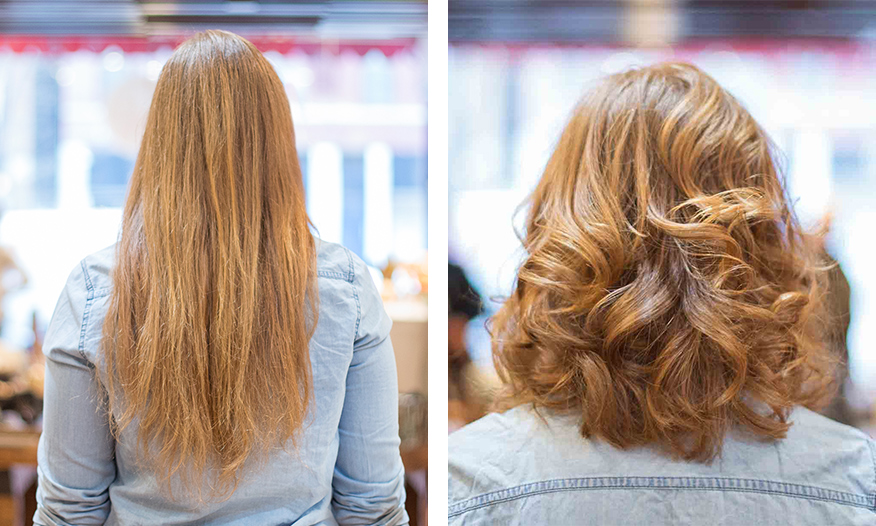GROUPON GUIDE TO CHICAGO
What I Learned from Donating Hair
BY: Shannon Grilli |Jul 16, 2018
Haircut Deals

Trending
Up to 60% Off Haircut Packages
2950 West Chicago Avenue, Chicago • 4.1 mi
33% discount_off
SoHo Atelier

One Men's Haircut and Optional Beard Trim or Hair Color
2137 West Belmont Avenue, Chicago • 5.1 mi
18% discount_off
Rudy Alfaro Hair Design

Shampoo, Blow dry, Trim + Silk Press for Smooth Hair!
1710 West 48th Street, Chicago • 5.5 mi
30% discount_off
7 bought
Momentum Glam And Beauty Salon

Trending
Up to 40% Off on Salon - Women's Haircut
490 Crescent Boulevard, Glen Ellyn • 22.9 mi
40% discount_off
Frank Gironda Salon & Day Spa

Up to 50% Off on Salon - Men's Haircut / Barber at Platinum Fades Barber Lounge IV
2847 North Pulaski Road, Chicago • 6.4 mi
50% discount_off
Platinum Fades Barber Lounge IV

Deluxe balayage package and Moroccan oil deep conditioning
26W223 Geneva Rd., Wheaton • 26.4 mi
50% discount_off
Mitchell Christopher Salon

Trending
Get a Fresh Look with Haircut and Deep Conditioning
144 East Lake Street, Bloomingdale • 23.9 mi
13% discount_off
Pivot Point Academy

Men's Haircut with Optional Beard Trim or Monthly Membership
111 N Wabash Ave, Chicago • 0.3 mi
20% discount_off
7 bought
Dehrek The Barber

Haircut, Conditioning, Blow-dry, Single Process, or Partial Highlights
1811 South Ashland Avenue, Chicago • 2.7 mi
31% discount_off
Stilo Salon

Haircut and Scalp Therapy Packages for Style and Relaxation
2109 West Division Street, Chicago • 3.3 mi
50% discount_off
Lashoholics

Experience Charles Ifergan Salon - Deerfield's Chic Hair Transformations with Balayage and Blowout, up to 30% off
380 Lake Cook Road, Deerfield • 21.8 mi
55% discount_off
Charles Ifergan Salon - Deerfield

Transform Your Look with Haircut and Conditioning Options
776 Dundee Road, Palatine • 28.7 mi
51% discount_off
Salon Donato

Up to 46% Off on Salon - Women's Haircut at XEX Hair Gallery
36% discount_off
XEX Hair Gallery

Revitalizing Men's Haircuts with Scalp Massage Treatment
490 Crescent Boulevard, Glen Ellyn • 22.9 mi
40% discount_off
Frank Gironda Salon & Day Spa

Up to 30% Off on Salon - Women's Haircut at Lashoholics
2109 West Division Street, Chicago • 3.3 mi
30% discount_off
Lashoholics
Deals on Other Salon Services

Up to 79% Off on Nail Salon - Manicure at Peach Academy
79% discount_off
Peach Academy

Enhance Your Natural Lashes with Keratin Lift & Tint
2869 North Milwaukee Avenue, Chicago • 6.0 mi
42% discount_off
Skin by Emelyn

Wig Installation or Half-Up, Half-Down Wig Styling
142 West 62nd Street, Chicago • 6.8 mi
60% discount_off
Joy of Beauty Boutique

Trending
Enjoy Smooth Frizz-Free Hair: Brazilian Keratin Blowout Treatment Kits
25% discount_off
Brazil Yourself

Up to 79% Off on Eyelash Extensions at Peach Academy
79% discount_off
Peach Academy

Up to 32% Off on Salon-Shellac/No-Chip Mani-Pedi at GG Studio
101 West Grand Avenue, Chicago • 0.9 mi
32% discount_off
GG Studio

Relaxing Mani-Pedi with Optional No-Chip and Spa Add-Ons
2448 N. Southport Ave., Chicago • 3.8 mi
10% discount_off
Ivona @ TINT Salon and Spa

Achieve Perfect Curls With Professional Hair Styling
205 East Lake Street, Bloomingdale • 23.6 mi
38% discount_off
Salon Gloss Beauty Bar

Get Beautiful One Gel X Nails
5400 Broadway, Merrillville • 29.0 mi
$80
Nail Werx

Get The Perfect Brows with Semi-Permanent Makeup!
231 North Northwest Highway, Park Ridge • 14.2 mi
56% discount_off
Ariava Brows And Beauty

Trending
Enjoy a Mystic Tan or Custom Airbrush Tan Experience
19644 La Grange Rd., Mokena • 26.7 mi
48% discount_off
Spray of Sunshine

Get Trendy with a GEL X Manicure for Stylish and Strong Nails
3240 Glenview Rd, Glenview • 17.4 mi
11% discount_off
La Mode Spa

Up to 50% Off on Salon - Hair Color / Highlights at Refresh Hair Studio Chicago
2232 West Lawrence Avenue, Chicago • 6.9 mi
50% discount_off
Refresh Hair Studio Chicago

Nail Perfection: Classic Pedicure, Dip Powder, or Acrylic Full Set
512 North Franklin Street, Chicago • 1.0 mi
19% discount_off
Tivvy Nails and Spa

Nutrafol Hair Growth Supplements for Women or Men
27% discount_off
The Tox Lady - Goods









